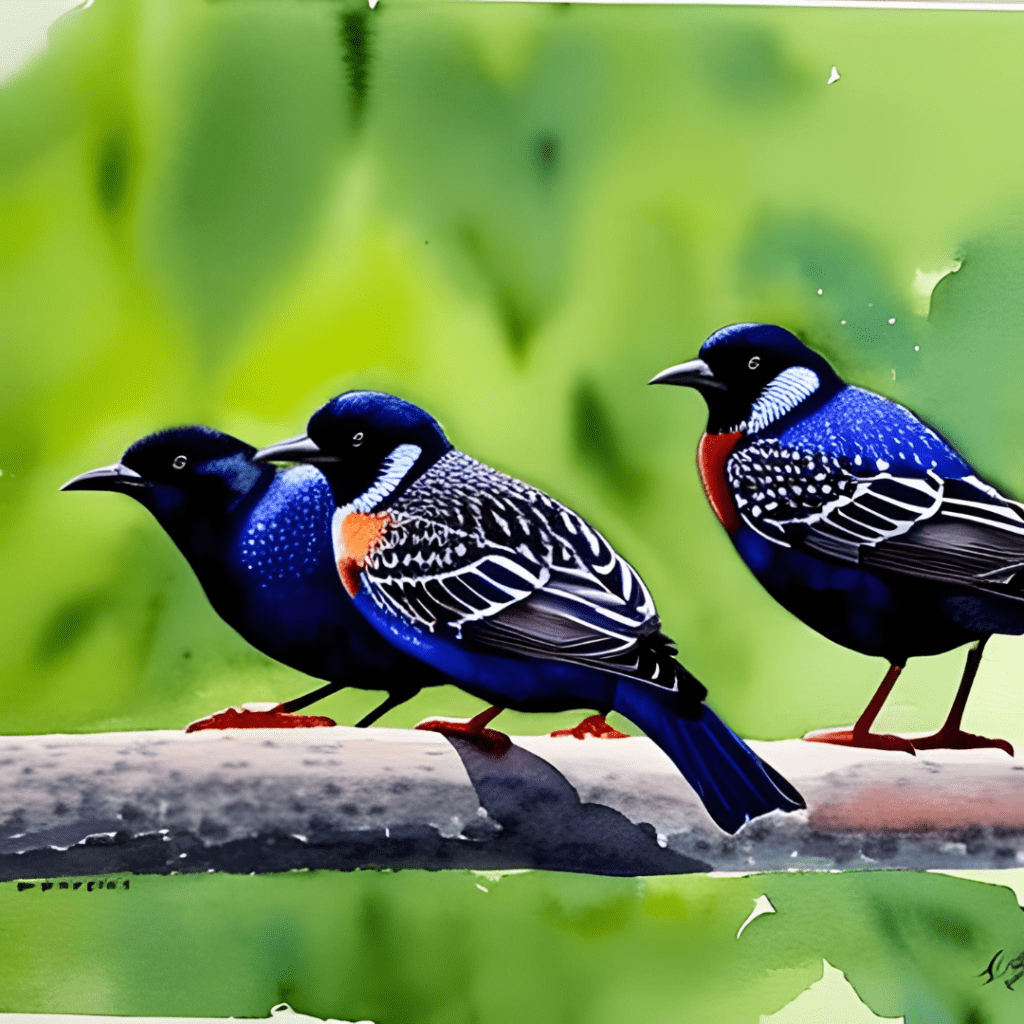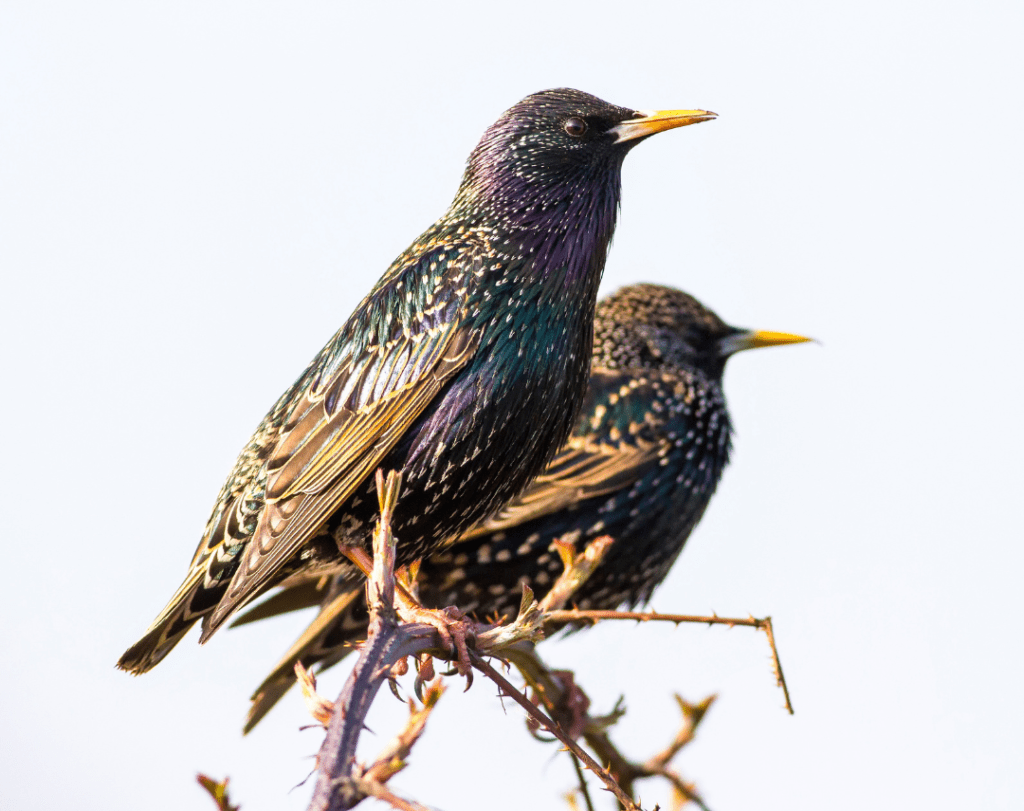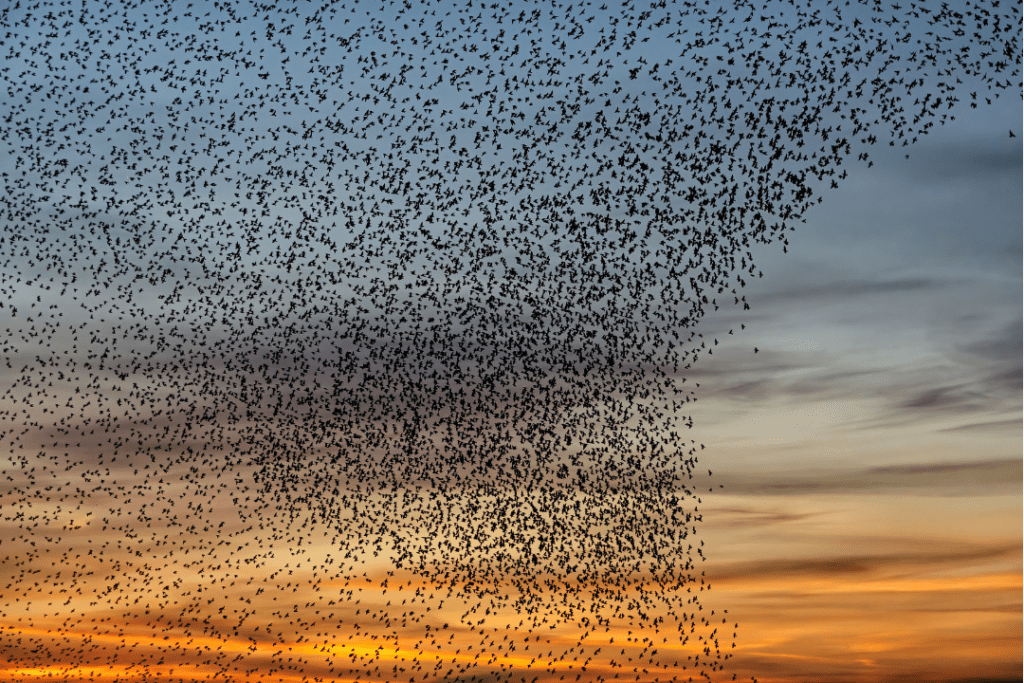Starlings are fascinating, adaptable birds that can be found across the globe. These medium-sized, gregarious creatures are known for their iridescent plumage, incredible murmurations, and intriguing migratory behavior. In this article, we will delve into the migration patterns of starlings, exploring the reasons behind their seasonal movements, the various destinations they travel to, and the challenges they face along the way. Understanding the intricacies of starling migration can help us appreciate these remarkable birds and the importance of conserving their habitats.

Do Starlings Migrate?
What is migration and how does it apply to birds?
Migration refers to the seasonal movement of a species from one region to another in response to environmental changes. For birds, this often means flying long distances to find suitable habitats for breeding, nesting, and feeding. Migratory birds can be classified into various categories based on their migratory patterns, with some traveling shorter distances and others embarking on extensive journeys.
Are starlings migratory birds?
Starlings (Sturnus vulgaris) are indeed migratory birds, with many populations undertaking seasonal movements in search of more favorable conditions. These migrations vary in distance, routes, and timing depending on the specific population and environmental factors at play.
Starling migratory behavior
Starling migration patterns are complex, with various populations following different routes and traveling varying distances. Some starlings migrate short distances, while others may cover thousands of miles during their journeys. Starlings typically migrate in large flocks, which offer safety in numbers and improve their chances of finding food and suitable breeding sites.
Why Do Starlings Migrate?
Evolutionary and ecological reasons for bird migration
Bird migration has evolved as an adaptive strategy to help birds survive and reproduce. Migratory birds can exploit the resources of different environments at different times of the year, allowing them to avoid seasonal fluctuations in food availability, temperature, and other factors that could limit their survival and reproductive success.

Why do starlings migrate?
Like other migratory birds, starlings migrate to find more favorable conditions for feeding, breeding, and nesting. Their migration patterns are influenced by a combination of environmental and climatic factors, including temperature, food availability, and day length. By migrating, starlings can ensure that they have access to the resources they need to survive and reproduce successfully.
When do starlings migrate? Do all starlings migrate?
Timing of starling migration
The timing of starling migration varies depending on the specific population and environmental factors. Generally, starlings begin their migratory journey in the fall, with most individuals departing their breeding grounds between September and November. They typically return to their breeding sites in the spring, usually between March and May.
Do all starlings migrate?
Not all starlings migrate. Some populations remain resident in their breeding range year-round, while others undertake partial migrations, with only a portion of the population migrating each year. The migratory behavior of starlings can be quite flexible, with some individuals adjusting their migratory patterns in response to changes in local conditions.
Differences in migration patterns between populations
Different populations of starlings have distinct migration patterns, with some traveling greater distances and following different routes than others. These variations are influenced by factors such as the availability of suitable habitats, the distribution of resources, and the degree of competition within and between populations.
Do starlings migrate from the UK? Do starlings migrate to Africa?
Migration patterns of UK starlings
Starlings in the UK are known to migrate, with many individuals departing their breeding grounds in the fall to seek milder conditions and better food availability. UK starlings typically follow a southwesterly route, with some traveling as far as the Iberian Peninsula, while others may venture even further into North Africa.

Starling migration to Africa
Although not all UK starlings migrate to Africa, some populations do indeed make the journey. These birds face various challenges and risks during their migration, including exposure to extreme weather conditions, predation, and the potential for collisions with man-made structures such as wind turbines and power lines.
Starling Migration Journey
Stopovers and destinations
During their migration, starlings may make several stopovers to rest and refuel before continuing their journey. These stopover sites, which can include both natural and human-modified habitats, are crucial for the birds’ survival as they provide opportunities for them to replenish their energy reserves and prepare for the next leg of their journey.
Starling navigation during migration
Starlings, like many other migratory birds, use a combination of innate and learned cues to navigate during migration. These cues can include the position of the sun, stars, and Earth’s magnetic field, as well as visual landmarks and olfactory cues. By relying on this diverse array of information, starlings can successfully navigate their way to their intended destinations.
Challenges and risks during migration
Starlings face numerous challenges and risks during migration, including extreme weather conditions, predation, exhaustion, and human-related hazards such as habitat loss, pesticide exposure, and collisions with man-made structures. These challenges can have significant impacts on starling survival and population dynamics, making their migratory journeys both fascinating and perilous.
Conservation of Starlings
The importance of starlings in the ecosystem
Starlings play essential roles in the ecosystems they inhabit. They are important seed dispersers and help to control insect populations through predation. Additionally, their nesting cavities provide shelter for other bird species and their presence can indicate the overall health of an ecosystem.
Threats and challenges faced by starlings
Starlings face numerous threats, including habitat loss due to agriculture, urbanization, and deforestation; climate change, which can alter the timing and availability of resources; and direct human-induced threats such as hunting, trapping, and pesticide exposure. These threats can have significant impacts on starling populations, making conservation efforts all the more important.
Conserving starlings and their migratory behavior
Conserving starlings and their migratory behavior requires a multifaceted approach that addresses the various threats they face. This can include protecting and restoring important breeding, stopover, and wintering habitats; reducing the use of harmful pesticides; implementing bird-friendly agricultural practices; and educating the public about the importance of conserving these remarkable birds and their habitats.
Fascinating Facts about Starling Migration
- Starling migration can cover distances of up to 2,000 miles, depending on the specific population and their migratory route.
- During migration, starlings can form flocks numbering in the thousands, creating mesmerizing aerial displays known as murmurations.
- Starlings are highly adaptable and can thrive in a wide range of habitats, from urban areas to rural landscapes.
- Some starlings have been known to alter their migratory behavior in response to environmental changes, demonstrating remarkable flexibility and adaptability.
Conclusion
Understanding the migratory journey of starlings offers valuable insights into their fascinating behavior, the factors that drive their movements, and the challenges they face along the way. By studying starling migration patterns and working to conserve their habitats, we can help ensure the survival of these remarkable birds and maintain the delicate balance of the ecosystems they inhabit. As we uncover more about the intricacies of starling migration, we come to appreciate their resilience and adaptability in an ever-changing world.
The importance of studying starling migration patterns extends beyond simple fascination; it contributes to our broader understanding of the complex relationships between species and their environments. By protecting and preserving the habitats that starlings rely on during their migratory journeys, we can support their continued survival and the overall health of our planet’s ecosystems.
So, as you watch a mesmerizing murmuration of starlings dance across the sky, take a moment to reflect on the incredible journey these birds have embarked upon and the crucial role they play in our world. By fostering a deeper appreciation for starlings and their migratory behavior, we can inspire a greater commitment to conservation efforts that benefit not only these captivating creatures but also the myriad other species that share our planet.

James has always been an avid outdoorsman. Since a kid, he kept a journal of all the different birds and species he saw. Now he wants to share his passion with other birders with Happy Birding!
